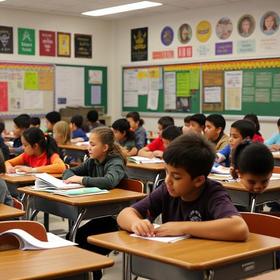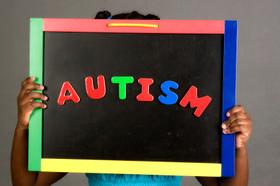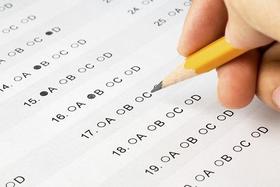Dysgraphia is a specific learning disability that affects writing skills. It is characterized by difficulties in expressing thoughts on paper, leading to poor handwriting, spelling, and overall written expression. Individuals with dysgraphia often face challenges in educational settings, where writing is a crucial mode of communication and assessment. In this article, we will delve into what dysgraphia is, its symptoms and explore effective remediation and treatment strategies.
What is Dysgraphia?
Dysgraphia is a neurological-based learning disability that affects the motor and cognitive processes involved in writing. It is not related to intelligence or lack of effort; rather, it stems from differences in brain function that impact fine motor skills, spatial reasoning, and language processing. Dysgraphia can manifest in both children and adults, leading to frustration, low self-esteem, and academic struggles if left unidentified and unaddressed.
Symptoms of Dysgraphia
Illegible Handwriting: Individuals with dysgraphia often have messy and illegible handwriting, making it difficult for others to read their work.
Poor Spelling and Grammar: Dysgraphia can lead to frequent spelling errors and challenges with grammar and punctuation.
Inconsistent Letter Formation: People with dysgraphia may struggle to form letters consistently and mix uppercase and lowercase letters.
Slow Writing Speed: Writing can be time-consuming for individuals with dysgraphia due to motor coordination difficulties.
Trouble Organizing Thoughts: Dysgraphia can make it challenging to organize thoughts and ideas into coherent written sentences or paragraphs.
Avoidance of Writing Tasks: Those with dysgraphia may try to avoid writing tasks or experience anxiety when faced with writing assignments.
This video explains the symptoms of dysgraphia.
Remediation and Treatment for Dysgraphia
Occupational Therapy: Occupational therapists play a crucial role in helping individuals with dysgraphia improve their fine motor skills, hand-eye coordination, and pencil grip. They use various exercises and activities to strengthen hand muscles and improve writing fluency.
Assistive Technology: Leveraging technology can significantly aid individuals with dysgraphia. Speech-to-text software allows them to dictate their thoughts, reducing the physical demands of writing. Word prediction software can assist with spelling and grammar corrections.
Graph Paper and Adaptive Writing Tools: Using graph paper helps individuals maintain consistent letter size and spacing. Adaptive writing tools like pencil grips and weighted pens can provide better control during writing tasks.
Multisensory Writing Programs: Educational programs like the Orton-Gillingham approach combine visual, auditory, and kinesthetic elements to reinforce writing skills systematically.
Breaking Tasks into Smaller Steps: Teachers and parents can help by breaking writing assignments into smaller, manageable steps. Providing clear instructions and offering constructive feedback can boost confidence and motivation.
Individualized Education Plan (IEP): Collaborating with educators to develop an IEP can provide students with dysgraphia additional support and accommodations tailored to their specific needs in the classroom.
Dysgraphia presents unique challenges for individuals struggling with writing skills, but they can achieve academic success with the right support and understanding. Identifying the symptoms of dysgraphia early on and implementing effective remediation and treatment strategies can make a significant difference in empowering individuals with dysgraphia to express their thoughts and ideas confidently through writing.
While dyslexia, reading struggles, and language-based learning disabilities have been points of focus for public schools, many experts are now shining a light on written expression issues. With rising students struggling with conveying their thoughts, feelings, or ideas in writing, public school leaders are striving to create programs to support written expression disabilities.
Labeled dysgraphia, a written expression disability, is essentially a cognitive struggle that inhibits an otherwise intelligent child from explicating ideas in a written form. To find out if your child is coping with an undiagnosed written expression disability, learn more about the symptoms and how your child's public school can offer support.
The Symptoms of Dysgraphia
Often referred to as the "sibling" of dyslexia, dysgraphia can be identified from a variety of symptoms. As the National Institute for Neurological Disorders reveals, "Dysgraphia is a neurological disorder characterized by writing disabilities... (causing) a person's writing to be distorted or incorrect."
Expanding on this definition, Audiblox, a cognitive, educational company, reports that the most common signs of dysgraphia typically include:
- Illegible writing and consistently poor handwriting
- Inconsistent use of letters
- The mixture of upper and lower case letters
- The mixture of print and cursive letters
- Irregular and inconsistent letter sizes
- Irregular and inconsistent letter shapes
- Incorrect spelling
- Reading words incorrectly (i.e., saying "boy" instead of "child")
- Unfinished words and sentences
- The general struggle to communicate through writing
Dysgraphic students often display frustrations when attempting to write thoughts and ideas in an organized manner. This is most obviously observed in a student's hate for writing. However, experts have found that students with dysgraphia rarely have any other academic, cognitive, or social problems. Furthermore, researchers have still not found the cause or catalyst for dysgraphia.
Coping with Dysgraphia
Unfortunately, as the cause of dysgraphia is still unknown, the "cure" for this disorder has also not yet been discovered. As experts continue to study students with symptoms of dysgraphia, new and innovative treatment methods are continually being created. Further reports from the National Institute for Neurological Disorders reveal that modern treatment methods include:
- Treatment for motor disorders (as this may help improve students' handwriting and writing control abilities)
- Treatment for impaired memory
- Treatment for other neurological problems
This video explains the treatment of dysgraphia.
How Can Public Schools Help?
While each public school is certainly limited by its own budgetary constraints, every public school in the United States is legally required to support all eligible students with special needs. While dysgraphia is not yet accepted as an official disability in all public schools, children who may be struggling with written expression disabilities are still legally eligible for help. Oftentimes, if a parent intercedes for special needs support for their child, a dysgraphic student can be accommodated with services such as:
- Additional tutoring assistance
- One-on-one teacher support
- Additional writing seminars and course guidance
- Extended deadlines on writing assignments
- Adjusted assignments and special accommodations
Some studies are currently investigating the benefits of typing instead of handwriting, and therefore, some schools may permit dysgraphic students to use computers for some (or all) of their assignments. Furthermore, some students may even be permitted to use a laptop in the classroom, as many leaders believe that the support of a computer helps students with written expression struggles overcome some of their most frustrating challenges.
Questions? Contact us on Facebook. @publicschoolreview














